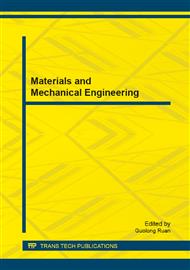p.323
p.328
p.334
p.339
p.346
p.353
p.359
p.364
p.371
Models of Two-Axle Driving Vehicle Used for Dynamometer Test Bench
Abstract:
In this paper, some vehicle models used for dynamometer test bench are put forward to adapt different performance tests of two-axle vehicle. Firstly, the vehicle driving model with two degrees of freedom is established by analyzing the force condition of a moving vehicle. And it can be used in performance tests which do not need complex road condition, such as acceleration test. Secondly, considering pitching motion of vehicle, the driving model with three degrees of freedom is proposed and applied to performance tests which need complex road condition, like thermal balance test or road simulation experiment. Finally, in order to do steering performance test in dynamometer test bench, the driving model is modified by considering the influence caused by steering and combines steering model to become a whole steering model of vehicle. Those models mentioned above provide theoretical support in dynamometer test bench researching.
Info:
Periodical:
Pages:
353-358
Citation:
Online since:
February 2014
Authors:
Keywords:
Price:
Сopyright:
© 2014 Trans Tech Publications Ltd. All Rights Reserved
Share:
Citation:


